Somatic Experiencing (SE) was developed by Peter Levine. It is a psychotherapeutic approach for dealing with and resolving trauma. Animals in the wild are exposed repeatedly to stressful events, but hardly bear the marks of trauma that human beings seem to retain and suffer from.
Levine set out to observe and discover whether human beings have the same potential that animals in the wild have to regulate their nervous system and avoid traumatization.
Somatic Experiencing (SE) and How the Body is Involved
Somatic Experiencing uses "tracking" of body sensations through dialogue to access high energy arousal of the nervous system. Trauma is an incomplete biological process in which the fight/flight mechanism has been activated without having had the possibility of discharging it.
It is this aroused "high energy" within the nervous system that leads to a multitude of physical and psychological suffering. Focusing on body sensations facilitates accessing trauma which is held within the body-memory tissues, or in other words, the unconscious.
Trauma is an incomplete biological process in which the fight/flight mechanism has been activated without having had the possibility of discharging it.
Trauma, from a physio-biological point of view, is a disruption of the free flow of energy within the nervous system. This will lead to hyperactivation of the nervous system with the following symptoms: anxiety, panic, hypervigilance, inability to relax, emotional flooding, sleeplessness, rage, and hostility. When the nervous system is negatively discharging through hyperactivation, it tends to vacillate in a counterpoint mode to the opposite extreme of hypoactivation, followed by these symptoms: lethargy, stasis, disconnection, exhaustion, depression, and disequilibrium.
It is as though the high energy arousal of an adverse event or period in one's life hasn't been able to discharge through fight or flight mode and has paralyzed itself within the body's systems.
Working Safely towards Resolution: Titration and Containment
Somatic Experiencing (SE) allows the accessing of trauma through listening to and observing body sensations. It does this in a way that is not overwhelming for the patient; it slows down the whole process and gives the patient the ability to regulate and integrate the release of energy. This goes by the term "titration."
It uses vacillation between a state of regulation, where the patient feels safe, and dysregulation, where the trauma becomes apparent and activated, to step-by-step assistance in digesting the energy of trauma and dysregulation into the regulation of body systems and related psychopathologies.
Have your used Somatic Experiencing to help heal trauma? Leave your comment below.

After another hypnotherapy session Monday where i cried loads to do with a trigger and also trying to amalgamate the old happier me with the current miserable me, i was absolutely fatigued for nearly 48 hours after and sort of numb to everything – is this what you are describing?
Hi Sara. It would depend on your hypnotherapist. SE works with tracking body sensations while emotion presents itself. To be able to digest and process it is important that emotional release is titrated (slowed down) so it does not overwhelm again and you are able to process and contain what you are experiencing. Fatigue can definitely happen after releases.
I did SE for 18 months and got short term relief (typically 48 hours after each SE session) from C-PTSD. It was Trauma Release Exercise that finally helped my nervous system from consistently going into a freeze state. I know a lot of the SE crowd are outspoken against TRE, but it saved my life and I think we need as many safe and effective modalities as possible. So grateful for Levine, Bercelli, Porges and all the other somatic professionals that have helped us make great strides!
This is really interesting. I used to do some TRE, and I was never sure if it was helping or not. I’ve even spoken to David Berceli over email. My symptoms are overwhelmingly physical, in that I constantly have activation in my left psoas, as if it’s trying to complete some kind of movement. I never get emotional overwhelm, it’s just raw brute sensation and buzzing. I’m not sure whether to resume my TRE practice or not. My symptoms have worsened the more I’ve focused on body sensations, which is the exact opposite of what I’ve been told should happen. I wonder if I should be doing more shaking to try and release this insanely tense muscle contraction. If I start to relax my back and hip involuntarily retch and jerk. It’s full on, and totally bewildering.
It’s just so hard to know what to do, especially as no one else seems to experience this level of physicality. To my knowledge anyway.
I’m really glad to hear that you found some relief and completion. Do you mind my asking if you got a big release, or was it more gradual?
Is the tendency to attack and push everyone who wants to offer love or support as a way to discharge stress possible to heal with this?
Frankly I’m doing worse and worse by the years
It’s impossible to have any relation any more
Somatic experiencing is the only approach to my PTSD that has had a positive impact so far. The titration approach is slowly helping me to overcome my symptoms.